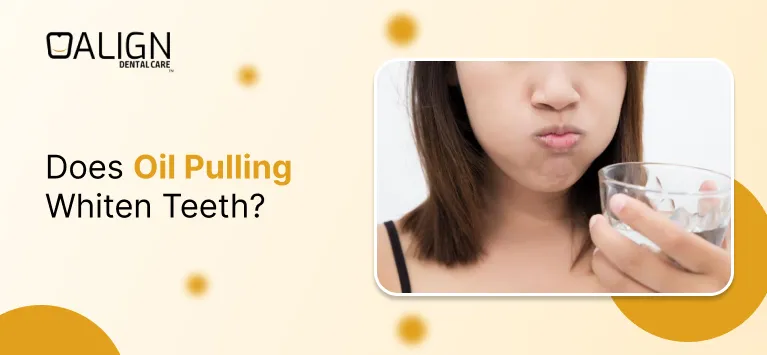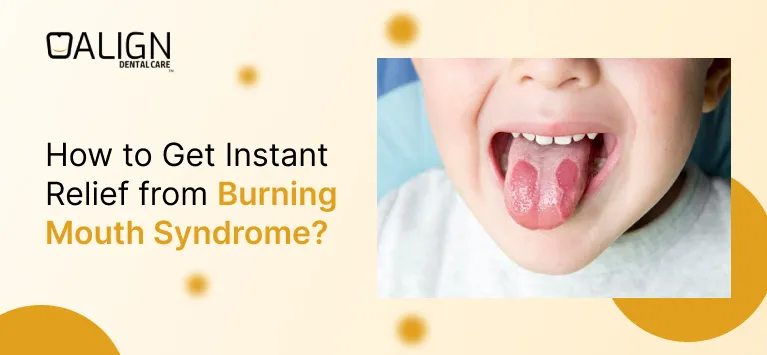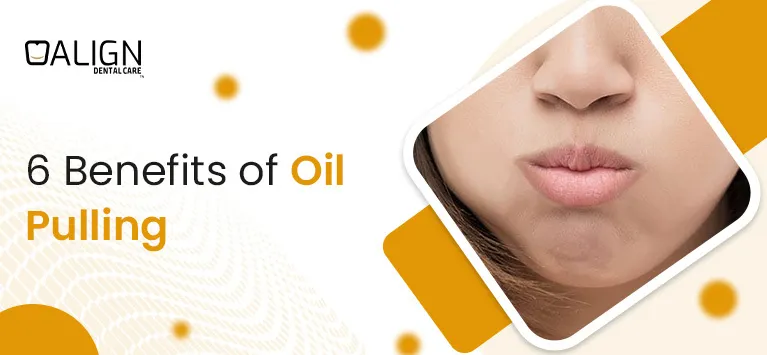
Does Oil Pulling Whiten Teeth?
Oil pulling is an ancient practice that has gained modern-day popularity as a natural method to improve oral health. Swishing oil in your mouth is believed to help remove bacteria, plaque, and other impurities, leading to a cleaner mouth and fresher breath. While many people swear by its benefits, a common question remains: does oil pulling actually whiten teeth? In this article, we’ll explore what oil pulling is, how it works, the benefits it offers, and whether it can truly make your teeth whiter.
Table of Contents
What is Oil Pulling?
A spoonful of oil, such as coconut oil, is swished in your mouth for 15 to 20 minutes while the oil is pulled. During this time, the oil binds to bacteria, plaque, and other impurities, which are then removed when you spit out the oil. It’s a simple process believed to promote oral health, freshen breath, and potentially reduce surface stains on teeth.
What’s the Origin of Oil Pulling?
Oil pulling is an ancient Ayurvedic practice dating back thousands of years. Originally from India, it was used as a traditional remedy to detoxify the body, improve oral health, and balance overall health. Traditionally, sesame oil was the most commonly used oil for this practice. Coconut oil gained popularity later due to its natural antibacterial properties, mild flavor, and easy availability, making it especially popular for oral care in the modern wellness community.
Benefits of Oil Pulling
Oil pulling has multiple potential benefits, including:
- Improved Oral Health: The swishing action helps remove bacteria and plaque, leading to a cleaner mouth.
- Fresher Breath: It can reduce the bacteria that cause bad breath, making your mouth feel fresher.
- Reduced Plaque and Gum Health: Oil pulling may reduce plaque formation by eliminating bacteria, helping support healthy gums.
Does Oil Pulling Whiten Teeth?
While there is no reliable scientific evidence that oil pulling whitens teeth, it can help make them look cleaner by removing surface stains and reducing bacteria. The practice mainly promotes better oral hygiene, which can lead to a brighter appearance over time. So, while it may not provide significant whitening, oil pulling can contribute to a fresher, healthier smile.
Choosing the Right Oil for Oil Pulling
When starting oil pulling, picking the right oil is essential. Look for oils with strong antibacterial qualities, a mild taste, and a smooth texture to make swishing more comfortable.
Here are some key factors to consider:
- Antibacterial Effect: The oil should help reduce harmful bacteria in your mouth.
- Nutrient Profile: Oils with high lauric acid content are great for fighting bacteria and viruses.
- Flavor and Texture: Choose an oil with a taste and texture you find pleasant, as it will be in your mouth for a while.
- Purity and Organic Quality: Organic, cold-pressed oils are best because they are free from chemicals and retain their natural benefits.
Best Oils for Oil Pulling
Several oils are popular for oil pulling, each offering distinct advantages:
- Coconut Oil: Known as one of the top choices, coconut oil contains lauric acid, which has strong antibacterial properties, helping to fight bacteria linked to tooth decay and gum disease.
- Sesame Oil: Traditionally used in Ayurveda, sesame oil is valued for reducing plaque and detoxifying the mouth. It’s a good choice for oil pulling due to its anti-inflammatory and antibacterial effects.
- Sunflower Oil: With its light flavor, sunflower oil is also widely used. It’s rich in Vitamin E, an antioxidant that supports healthy gums.
- Clove Oil: Clove oil is valued for its pain-relieving and antibacterial properties, making it helpful for soothing gums and reducing bacteria in the mouth.
- Neem Oil: Often used in Ayurvedic medicine, neem oil has potent antibacterial and anti-inflammatory properties, making it an excellent option for promoting oral health.
- Mustard Oil: Known for its warming effect, mustard oil helps improve blood flow in the gums, offering a unique benefit for maintaining oral health.
Each oil has unique properties, so you can choose one based on your preference.
How to Oil Pull
If you’d like to try oil pulling, follow these steps:
- Put About 1 Tbsp (15 ml) of Oil in Your Mouth: Coconut oil is a popular choice, but other oils like sesame or sunflower work too.
- Swish for 15-20 Minutes: Move the oil around your mouth gently. Avoid using too much force, as it may cause discomfort in your facial muscles.
- Spit Out the Oil: To avoid clogging your pipes, spit the oil onto a piece of paper and dispose of it in the trash.
- Brush Your Teeth: After oil pulling, rinse with water and brush your teeth as usual.
Tip: Some people prefer oil pulling on an empty stomach before brushing, often doing it in the morning while showering.
How Does Coconut Oil Whiten Teeth?
Coconut oil has natural antibacterial properties, which may help remove plaque and bacteria that can cause yellowing or dull teeth. When coconut oil binds with these impurities during swishing, it can help clear away surface stains, leaving teeth looking cleaner and potentially whiter. However, it does not chemically whiten teeth like traditional whitening agents do.
Financial Benefits of Oil Pulling
Oil pulling can be a cost-effective way to maintain oral hygiene. Compared to expensive whitening treatments and dental products, a jar of coconut oil is relatively affordable and can last several weeks to months. By potentially reducing plaque and improving oral health, it may also help cut down on future dental expenses.
Conclusion
While oil pulling may not directly whiten teeth like traditional whitening treatments, it can help reduce surface stains and improve oral hygiene, leading to a fresher and healthier-looking smile. Its ability to remove plaque and bacteria contributes to better oral health and can enhance the natural brightness of your teeth over time. With the right oil and regular practice, oil pulling can be a simple, cost-effective addition to your oral care routine.













